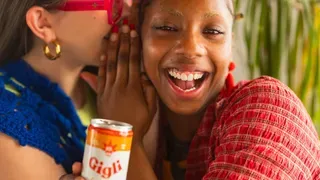August 1, 2019
Guadalajara: How Losing Out on the Gay Games Catapulted Jalisco's Capitol Into the LGBTQ Spotlight
Ivan Quintanilla READ TIME: 6 MIN.
When in 2015, the governments of the Mexican state of Jalisco and its capital Guadalajara began a bid to host the Gay Games in 2022, they unwittingly set the city on a path to LGBTQ-awakening.
The Gay Games are an LGBTQ-Olympics of sorts, whose mission is to promote equality through sport and culture. They've been held every four years since 1982 and have grown into an internationally-popular event that in 2018 brought more than 10,000 participants to Paris. For Guadalajara, the three-year bid process signified a shift in focus for a government that had not previously engaged the LGBTQ tourism market.
Spoiler alert: Gay Games ultimately chose Hong Kong for 2022 though Guadalajara was one of three finalists.
But for Guadalajara, the victory was in playing the game. "We lost the bid but, in retrospect, we won so much. It opened so many doors and created new relationships," says Rocio Lancaster Jones, Jalisco's Tourism Promotion Director.
In truth, as the second largest city in Mexico, Guadalajara has been home to a thriving LGBTQ community for quite some time. Guadalajara Pride this June brought out an estimated 100,000 people – the most of any Pride event in the region.
"Of course, there are many LGBTQ people in Guadalajara, but there are also 17 million people who live within two hours from the city and we are working to create more unique events for them," says Andres Trevi�o Luna, the Sexual Diversity Director for Jalisco, a new position created as a liaison to the LGBTQ community. "And this is a direct line from the work started with the Gay Games."
Guadalajara is growing as an LGBTQ tourist destination. For the first time this year, the Pride March was accompanied by Semana del Orgullo, a week of LGBTQ-focused events that included Festival Prohibido. Prohibido turned a former chocolate factory into a sex-positive, cultural festival with a come-as-you-are welcoming vibe to celebrate sexual diversity in all its expressions.
The festival featured sexually explicit art installations and interactive experiences that included on-site tattoos, live music performances, DJ sets and gender-bending, cos-play parties. The programming even included an "LGBTQ+ for Dummies" presentation designed to better educate the public on our community's history and appropriate terminology. Planning for Prohibido 2020 is already in the works.
For a city with such forward momentum, it's also solidly grounded in tradition and there are plenty of cultural activities in Guadalajara. The region is considered the birthplace of mariachis and charrer�a, a Mexican rodeo included in UNESCO's Intangible Cultural Heritage List. Every August through September, the city comes alive with the sound of music – of the five-string guitar, violin and trumpet variety – for the International Mariachi Festival. Mariachis old and new, traditional and modern, and of every level of fame, serenade the city during the 10-day festival (the largest in the world).
Regardless of a festival, mariachi music and folkloric dances grace the stage daily at El Parian Plaza in Tlaquepaque, a colonial enclave within the metropolitan area of Guadalajara. Stop in for a cazuela, a tequila-citrus punch traditionally served in a bowl for sharing, and see the rotating roster of performances at the plaza. But don't leave Tlaquepaque without strolling down the pedestrian-only Independence Corridor, with its ceramic shops, art galleries and life-sized sculptures lining the promenade.
Tlaquepaque is also home base for Ballet Folclorico Diversidad Jalisciense, an all LGBTQ+ troupe that has been recreating traditional dances with an inclusive message.
"It's important for us to show our art within our community and highlight our Mexican culture," says M�nica Lazcano, the troupe's artistic director. "But more than anything we want to show our love and respect for our traditions because dance unites us and doesn't distinguish gender, sex, color or religion. With us, everyone is included and welcome."
For immersion into the city's past, a stroll through Guadalajara's Centro is a must on any visit. Start at the main plaza overlooking the Guadalajara Cathedral. The Cathedral, though begun in 1561, has been rebuilt many times due to earthquake damage throughout the years. Today it is an ornate hodgepodge of architectural styles including Baroque, Churrigueresque and Neoclassical, flanked by gothic towers with yellow spires stretching toward the heavens. This combination is part of the cathedral's one-of-a-kind beauty, creating a stunning potpourri of piousness that even the least religious of visitors will appreciate.
From church to state, head next to the Palacio de Gobierno (housing government offices) to view the impressive mural by artist Jose Clemente Orozco overlooking the interior staircase. For the full Orozco artistic experience, no trip is complete without a visit to the Hospicio Caba�as. Originally built as an orphanage in the 19th century, Caba�as is now one of the top museums of Mexico and home to Guadalajara's own "Sistine Chapel" of murals by Orozco. The museum, which features all styles of art and was added to the UNESCO World Heritage List in 1997, also created LGBTQ-specific programming this year during Pride.
When the Sun Sets
Catch an afternoon siesta and plan for an evening that carries on until the wee hours of the morning. For an urban retreat, stay at the Hilton Guadalajara Midtown, one of the newest Guadalajara hotels. The property features a rooftop pool and bar, executive lounge, multiple dining options and sits next to one of the largest shopping centers in Guadalajara.
Beyond the artistic and cultural traditions that make Guadalajara unique every day, the city's Centro thumps to the sounds of dance music after sundown. Of the many things to do in Guadalajara at night, consider starting your evening at California's Bar – everyone else will. The crowd here is extremely friendly and diverse: bears, muscle boys, twinks... they're all there to have a good time.
For the complete dance club experience, head to Babel around the corner. Babel is the most popular club in Guadalajara right now, with different floors playing varying styles of music. Dance to Latin, pop or electronica, or head to the top-floor terrace for hilarious drag performances that prove sass and camp transcend all language barriers.
If you're looking to add some spice to your evening, start with the sexy strippers at Taberna de Caudillos before letting it all hang out (quite literally!) at the men-only Voltio. Their underwear parties require a clothes check and attract a crowd that is slightly rougher around the edges and looking to play in the maze of a very active back room.
Still not satisfied? Make a pit stop at Tacos Gay on your way home. Yes, Guadalajara has its own gay taco stand that stays open till 6 a.m. Because there's no longing that an LGBTQ-friendly taco can't fill.
Cuban born, Miami raised, Dallas and London educated and New York seasoned, Ivan Quintanilla is a travel writer and professional actor living in Hell's Kitchen, NYC. Read about his latest destinations at TravelingIQ and follow him on Instagram at @TravelingIQ






